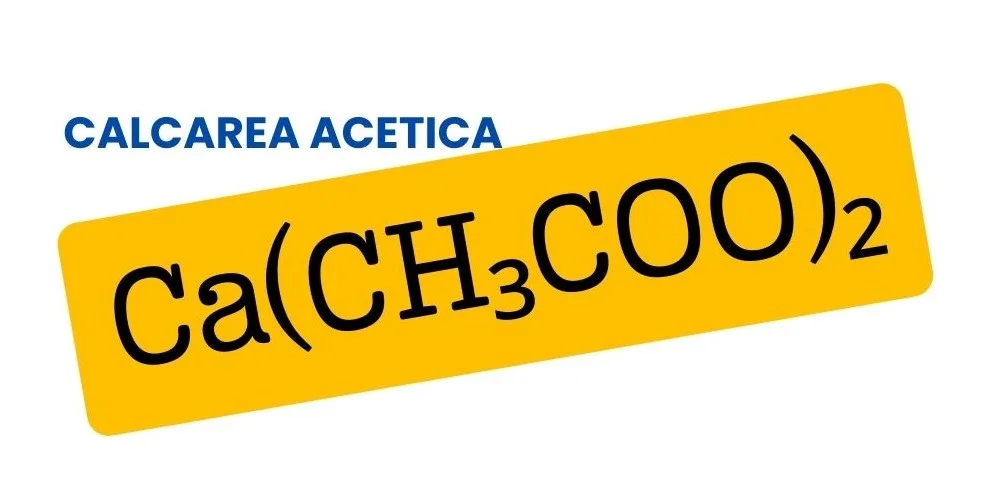Calcarea Acetica, also known as Acetate of Lime, is a homeopathic remedy primarily utilized in treating inflammation of mucous membranes characterized by membranous exudation.
It shares similarities in action and application with Calcarea Carbonica but has shown remarkable efficacy in specific conditions like cancer pains.

Table of Contents
ToggleSOURCE INFORMATION
Acetate of lime, chemically known as calcium acetate, is a chemical compound derived from the reaction between calcium carbonate (lime) and acetic acid.
It is commonly used in various industrial and pharmaceutical applications.
Chemical Composition
- Formula: Ca(CH₃COO)₂
- Molar Mass: 158.17 g/mol
Uses
Industrial Applications: Calcium acetate is utilized in industries for various purposes, including:
- Production of textiles and leather: It is used as a mordant in dyeing processes to fix colors to fabrics and leather.
- Chemical synthesis: It serves as a precursor in the synthesis of other chemicals.
- Food industry: It functions as a preservative and flavoring agent in certain food products.
Medical Uses: In medicine, calcium acetate is primarily used as a medication to treat high levels of phosphate in patients with kidney disease.
It helps to lower phosphate levels in the blood by binding to phosphate in the food you eat, preventing its absorption in the intestines.
Acetate of Lime in Homeopathy
In homeopathy, acetate of lime (Calcarea Acetica) is used as a remedy prepared from calcium acetate.
It is primarily indicated for inflammation of mucous membranes with membranous exudation and has shown efficacy in managing conditions such as cancer pains and membranous dysmenorrhoea.
Safety Considerations
- While calcium acetate is generally considered safe when used as directed, it may cause side effects such as constipation, upset stomach, or nausea, especially when used in high doses.
- It is essential to follow dosage instructions and consult a healthcare professional before use, especially in the case of medical conditions or interactions with other medications.
DRUG PATHOGENESIS
- Calcarea Acetica exhibits a specific affinity for inflamed mucous membranes with membranous exudation.
- It is particularly effective in managing cancer pains and has demonstrated promising results in cases of membranous dysmenorrhoea.
KEY CHARACTERISTICS
- Indicated for inflammation of mucous membranes with membranous exudation.
- Effective in managing cancer pains.
- Symptoms include vertigo in open air, obscure senses while reading, megrim (headache) with coldness in the head, and a sour taste in the mouth.
- Respiratory symptoms include rattling expiration, loose cough with expectoration resembling casts of bronchial tubes, difficulty breathing (relieved by bending shoulders backward), and a constrictive anxious sensation in the chest.
PARTICULAR ORGAN SYMPTOMS
HEAD
- Vertigo worsens in open air.
- Sensation of obscured senses while reading.
- Headache (megrim) accompanied by intense coldness in the head and a sour taste.
FEMALE
- Membranous dysmenorrhoea (painful menstruation with the discharge of membranous material) is a notable indication in females.
RESPIRATORY
- Expiration marked by rattling sounds.
- Loose cough producing expectoration of large pieces resembling casts of bronchial tubes.
- Breathing difficulties, alleviated by bending the shoulders backward.
- Feeling of constriction and anxiety in the chest.
RELATIONSHIP WITH OTHER DRUGS
- Comparable to Bromium and Borax.
- Similar to Calcarea Oxalica in managing excruciating pains associated with open cancer.
DOSE
Administered in the form of the third trituration.
Frequently Asked Questions
What conditions does Calcarea Acetica treat?
- It is primarily used for inflammation of mucous membranes with membranous exudation and cancer pains.
How is Calcarea Acetica different from Calcarea Carbonica?
While both remedies share similarities, Calcarea Acetica has shown superior efficacy in cases of membranous dysmenorrhoea and cancer pains.
Is Calcarea Acetica safe for self-administration?
It is advisable to consult a qualified homeopathic practitioner for proper guidance and dosage recommendations.
Meaning of Difficult Words
- Membranous dysmenorrhoea: Painful menstruation characterized by the passage of membranous tissue during menstruation.
- Exudation: The process of fluids, cells, or other substances being discharged or released, especially from cells or blood vessels.













Leave a Reply